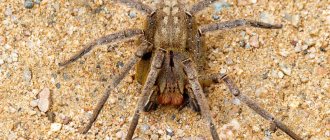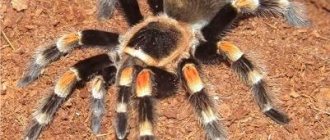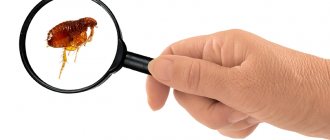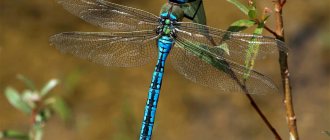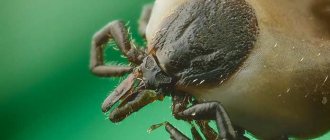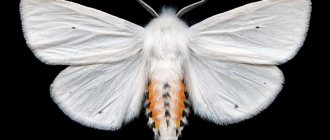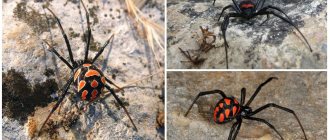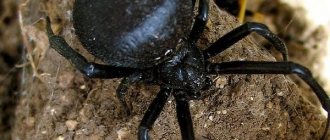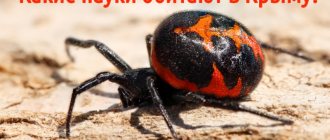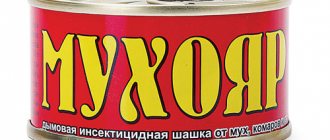There are more than 600 thousand species of insects on Earth, which are very important for maintaining balance in the ecosystem. Most of them are safe, but there are some that can cause serious harm to humans. These are the ones we will talk about in our review.
Photo: pixabay.com
Many insects have a rather unpleasant appearance and can cause a real phobia in a person, without being dangerous. However, there are other bugs that look quite harmless, but can cause irreparable harm to a person or animal. These insects are dangerous because they can:
- Be carriers of deadly diseases: plague, typhus, tick-borne encephalitis, sleeping sickness and others.
- Show aggression towards a person - bite, sting.
- Parasitize the human body.
Therefore, people should always be vigilant, especially if they are visiting exotic countries with unfamiliar flora and fauna. Typically, insects can harm humans through:
- Bite.
- Touching the skin.
- Getting poison into the oral cavity.
A person's suffering after a venomous bite can last for hours or days, and can also lead to serious consequences, including death.
We present a ranking of the most dangerous insects on the planet. The review was compiled based on data from the portal fieldandstream.com.
Rating:
- Mosquitoes
- Triatomine bugs
- Tsetse fly
- Bees
- Indian red scorpion
- Scorpions Deathstalker
- Spiders Black Widow
- Brazilian wandering spiders
- Brown Recluse Spider
- Ants
- Fleas
- Ticks
Africanized bee
The Africanized bee turned into one of the most dangerous insects by accident. The scientist who brought the Kerra breed from Africa accidentally released the bees and the females crossed with drones. The result of the mix was a very aggressive bee. This species is very hardy and strong. Bees are capable of attacking houses in swarms and killing animals and people, which is why they are nicknamed “killer bees.” No one risks approaching their hive, otherwise there is a risk of death. Bees are capable of chasing prey for several kilometers. Even if a person dives into the water to hide from his pursuers, they will circle above the surface for a long time and wait for the victim. Insects do not calm down like European bees in an hour, but remain in an aggressive state for up to 8 hours.
Brazilian wandering spider (Phoneutria)
The most poisonous spider in the world. Among spiders, it is of medium size, its size is about 10 cm. The color is brownish or greenish, covered with short hairs. The eight-legged predator loves to change its surroundings and wander around different places. Does not have permanent habitats or nests. This creates an additional danger - you can meet him anywhere. It hunts mainly at night, using poison to kill victims. Distributed in South and Central America.
The poison is one of the most powerful in nature. Like many poisons, this toxin can be used for medical purposes in small doses. The poison binds the muscles, paralyzes the person, and after a short time breathing stops. If infected, death occurs in 80% of cases. However, there is an antidote; you just need to quickly take the bitten person to the hospital.
Hairy coquette moth caterpillar (Megalopyge opercularis, Megalopyge crispata)
The Coquette moth is very beautiful in appearance and completely harmless, unlike its own caterpillar, like Lonomy. Distribution area: North America. The caterpillars of both types of moths are covered with thick, soft hairs. The opercula is especially beautiful. A charming insect that looks like a soft toy, you just want to pet it, like a fluffy kitten.
These beauties have thin, poisonous spines under their thick fur. When you touch the caterpillar, the tips of the spikes penetrate the skin and break off. The poison continues to spread throughout the body after contact. The effect of the poison leads to disorder of the body, the lymphatic system is affected, and respiratory arrest may occur.
You should not pet these beauties - they are touchy, and try in every possible way to protect their integrity.
 Tsetse fly
Tsetse fly
The African tsetse fly is also a dangerous carrier of the disease. In its genus there are approximately 23 species of its family. Externally, the tsetse is no different from an ordinary fly with the exception of a small proboscis. It lives in Africa and among the Sahara deserts. Tsetse is a carrier of trypanosomiasis, which leads to many diseases, including the main one - sleeping sickness. These flies infect a huge number of people with this disease every year. She feeds from her proboscis and chooses not only people as her prey, but also animals. Once bitten, tsetse fly parasites cause: confusion, lack of sensation and poor coordination. Animals with the parasite have symptoms such as fever, anemia and weakness. In any case, if you do not treat the parasites of this fly, it can lead to death.
Third place - Hornets
Hornet
A bee or wasp sting is painful, but deaths are rare and are associated primarily with allergies or mass insect attacks. Hornets are more dangerous - especially the giant Asian hornet, which lives in Primorye. Hornets readily attack bees and feed them to their larvae; they are aggressive creatures that will attack humans if disturbed.
Insect venom contains neurotoxins and substances that destroy tissue. It causes severe anaphylactic shock, and the outcome of the encounter can be death. Hornets act both alone and in groups. A person stung several times receives a large dose of toxic substances, which leads to serious consequences for the body. Every year, about 300 people die from encounters with these insects. Insects could be put in first place, but encounters with them do not occur very often. But every year their habitat is expanding, this is due to global warming. And the risk of meeting increases.
1) Poisonous caterpillar Lonomiya
In appearance, a completely ordinary caterpillar, Lonomia, does not look so terrifying at all. But in fact, it is the deadliest caterpillar in nature. Initially, scientists assumed that touching it could cause normal skin irritation and burns, but in the end it would be much worse. Its poison kills a considerable number of people every year. The caterpillar itself is just an ordinary larva of the Saturnia butterfly from the Peacock Eye family. The main habitat of the caterpillar is the tropical expanses of South America, Brazil, Paraguay and Argentina. Externally, lonomia is found in brown or green color. Her body is covered with furry growths that contain poison. A person touching a caterpillar gets his skin pierced by its thorny fibers. Then, at the moment of puncture, it leaves a drop of poison, which enters the person’s bloodstream. A slight pain appears at the puncture site, which recedes after a while. The effectiveness of the poison does not act immediately, but after a little time. The toxic poison of lonomy causes further consequences such as: cerebral hemorrhage, kidney failure, poisoning of the body and blocks blood clotting. Also, after a puncture, when the pain subsides, you can notice huge hemorrhages on the body, which indicate poisoning. An antidote to the toxic venom of this caterpillar exists, but it must be administered immediately within 24 hours. There are often cases when a person does not even feel the attack of lonomia. After all, this caterpillar has good camouflage, which makes it invisible against the background of tree bark and leaves.
Red fire ant
Red Fire Ant
The reddish-red members of the huge family of ants are native to America, China, the Philippines, Taiwan and Australia. Having a 6-mm body, these insects are not the largest representatives of their genus. However, their toxin is 12 times stronger than the poison of the honey bee and hornet. An attack by a miniature ant is accompanied by unbearable pain and the injection of poison into the skin. The poisonous cocktail includes 46 dangerous ingredients that have a negative effect on the nervous system.
The threat also lies in the belligerence of insects. As soon as a person or animal inadvertently disturbs an anthill, all its inhabitants instantly attack the potential enemy. For small mammals such an attack becomes fatal. It threatens people with sensations comparable to a fire burn, redness of the skin, swelling and dizziness. For allergy sufferers, an attack by red fire ants can result in anaphylactic shock and coma.
Kissing bug
The name “ kissing bug” has nothing to do with the behavior of this dangerous insect, namely the bad habit of stinging a person on the lips. The beetle is attracted by the heat of the breath and the carbon dioxide released. He attacks at night. In tropical countries, the insect spreads a disease called Chagas disease, the symptoms of which can develop over several decades and cause heart failure in humans.
Hermit spider (Loxosceles reclusa)
The small light brown or ocher spider got its name for its desire for silence and solitude. Distributed in the eastern United States, but there is evidence that it could have entered Australia with the goods. It prefers a calm subtropical climate and can easily acclimatize in suitable places.
The spider hunts more often at night. Poison is necessary for hunting. The spider suddenly attacks a resting insect and injects a portion of poison. The venom of the recluse spider is one of the most powerful toxic substances on the planet. Its properties have not been fully studied.
The hermit loves warmth and dryness, so he inhabits barns, attics, empty summer houses, and garages. It attacks if it feels threatened or if its nest is disturbed. The bite is not painful, so it may not be noticeable. After a few hours, a burning sensation is felt in the area of the bite, tissue cells die, and tissue necrosis begins. When the poison spreads throughout the body, disruptions in the functioning of the heart occur.
In the United States, approximately 7 thousand people suffer from the bites of this little one, about 2,500 of them suffer from very serious disorders of the body.
Second place – ground beetle
Ground beetle
Meeting a ground beetle is especially risky – and this is not in vain. A large black beetle may interest a child or be near an adult, and interest in it may end in failure. The beetle is capable of shooting caustic liquid from the back, and over a considerable distance, up to 50 cm. If the substance gets on the skin, a burning sensation and discomfort will occur. In case of contact with eyes, mouth, or respiratory organs, the risk increases; it is necessary to rinse the affected surface with plenty of water.
Interesting: The largest insects in the world - list, size, names, where they are found, photos and videos
Fourth place - gadflies and horse flies
Horsefly and gadfly
In addition to the severe pain from a bite of a horsefly or gadfly, there is a risk of infection - insects even carry anthrax. There is a risk of subcutaneous introduction of gadfly larvae - this is how they reproduce. Horseflies do not lay larvae on their victims. The larva may even end up in the eye or inside the skull. Laying eggs on the body of the victim is not at all necessary; insects can lay them on the grass, where they develop until they move onto the body of the host, usually a herbivore.
Interesting: Does the anthill get wet in the rain?
Gadflies are attached to a specific host species - for example, there are sheep, cow gadflies, and other varieties. But none of them will refuse to bite a person or lay a larva. Insects migrate with herds and are active in farmyards and near water.
Fifth place - ants
Ants
Despite the fact that the most dangerous species of ants do not live in Russia, many people are familiar with the bites of red ants. In addition to severe pain when bitten, there is a risk of developing anaphylactic shock, since the insect injects acid and other substances into the body. There is a cross-reaction between aspen and ant poisons. Red and fire ants live in anthills, the height of which sometimes reaches half a meter. You can meet them everywhere in forests and nature, even in the country.
5) Locust
Although locusts cannot directly kill humans, swarms of these insects devastate entire fields of crops. Locusts are mentioned in the Bible when God sent swarms of locusts to plague Egyptian crops so that Pharaoh would allow Moses to leave Egypt. Locusts destroy thousands of hectares of crops every year and in a very short time, since one swarm can include several thousand individuals. Thus, locusts lead to the fact that a person is left without food and may die of hunger.
6) Malaria mosquito (sandfly)
Parasitic malaria mosquitoes pose a significant danger to people. In their genus they have about 10 subspecies of their family. Basically, Indian and African species are more dangerous. These small dipterous insects are carriers of parasites and infections. The malaria mosquito goes through a whole cycle of infection. Initially, he becomes infected with Plasmodium from a human host. The malarial plasmodium then multiplies inside the mosquito. Then the mosquito, after 5-10 days, becomes the carrier of the infection and its main source. There are mosquitoes that carry not only human, but also animal plasmodium. The most dangerous diseases transmitted by malaria mosquitoes are: malaria, threadworms, yellow fever and encephalitis.
Flea
The flea or “a few millimeters of danger” is an insect from which humans have been suffering for many centuries. It was fleas that caused the plague that struck all of Europe in the 12th century and killed 15 million people. First of all, the danger of fleas is that they are carriers of many dangerous diseases such as encephalitis, typhus, anthrax and various helminthiases. During evolution, they lost the ability to fly, but their mouth became capable of biting through the thick skin of the victim and drinking its blood.

